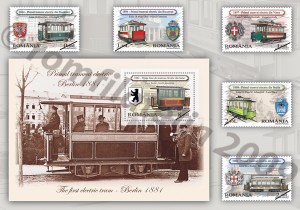 The last decades of the 18th century have registered a strong expansion of the technical progress which prepared the true industrial revolution on the European and American continents, developed during the entire period of the 19th century. The old manual technical methods have been replaced by the invention of useful machines and tools in almost all the domains. The last decades of the 18th century have registered a strong expansion of the technical progress which prepared the true industrial revolution on the European and American continents, developed during the entire period of the 19th century. The old manual technical methods have been replaced by the invention of useful machines and tools in almost all the domains.
The last decades of the 18th century have registered a strong expansion of the technical progress which prepared the true industrial revolution on the European and American continents, developed during the entire period of the 19th century. The old manual technical methods have been replaced by the invention of useful machines and tools in almost all the domains. The last decades of the 18th century have registered a strong expansion of the technical progress which prepared the true industrial revolution on the European and American continents, developed during the entire period of the 19th century. The old manual technical methods have been replaced by the invention of useful machines and tools in almost all the domains.
Among the important discoveries it is also included the tram, invented in 1775 by the British John Outram. At the beginning, the vehicle destined for the transportation of the travellers outside the cities, has circulated on cast-iron rails, being pulled by two horses.
In the year of 1832, John Stephenson has built the first urban tram in New York which made the connection between Manhattan and Harlem. After twenty years, Emil Loubat, of French origin, had the idea of embedding the rails in the pavement, an example being the 6th Street in New York.
In 1854, France becomes the first country in Europe where the tram pulled by horses circulated in Paris, between Place de la Concorde and Saint-Cloud.
In the ‘70s, within the 19th century, England, Belgium and Germany were the European countries where this mean of transportation has circulated.
In 1869, the tram pulled by horses has been also introduced into circulation in Timisoara so that three years later, in 1872, we find it in Bucharest as well.
1881 is the appearance year of the first electric tram in Berlin, following Vienna (1897), Frankfurt on Main (1884), Richmond (USA-1888), Clermont – Ferrand (France – 1890), Kiev (1891).
In Romania, in Bucharest, in December 1894, has been put in function the first electric tram, between Obor and Cotroceni. There followed the cities Sibiu, Timisoara, Arad, Braila and others.
Together with the development and the increase of the number of the means of public transportation in Bucharest, in April 1909, the Communal Council of the City Hall has decided the incorporation of the Bucharest Society of Transportation (BST) with the purpose of electrifying all the tramway lines in the Capital and of building new lines.
Responding to the passion of the stamp collectors for topics from the history of technique, Romfilatelia introduces into circulation the postage stamps issue “Electric trams”.
The images of the stamps of the philatelic issue present models of electric trams which have entered in the history of this means of passengers transportation.
On the stamp with the face value of RON 0.80 is illustrated the first electric tram in Frankfurt on Main (1884).
On the postage stamp with the face value of RON 1.20 is illustrated the first electric tram in Bucharest (1894).
On the postage stamp with the face value of RON 1.60 is illustrated the first electric tram in Vienna (1897).
On the postage stamp with the face value of RON 2.10 is illustrated the first electric tram in Braila (1899).
On the postage stamp with the face value of RON 2.40 is illustrated the first electric tram in London (1901).
On the perforated souvenir sheet of the postage stamps issue with the face value of RON 8.10 is illustrated the first electric tram in Berlin (1881).
Issue date: 2009-08-14



